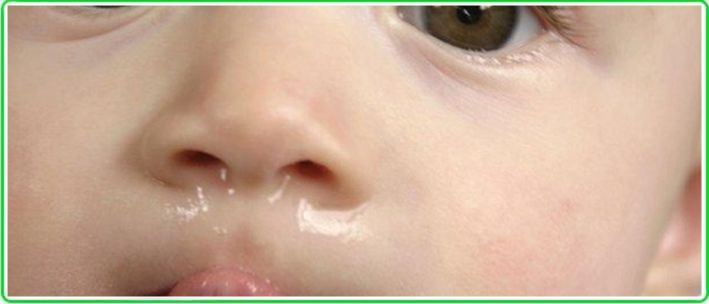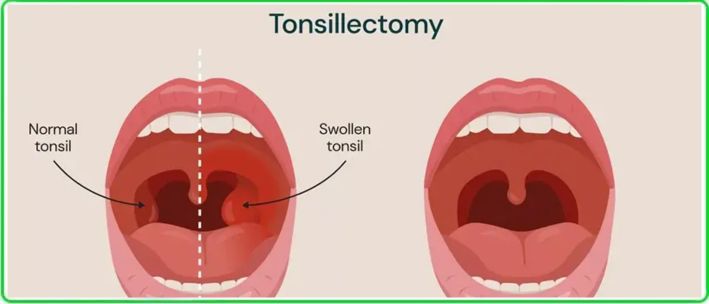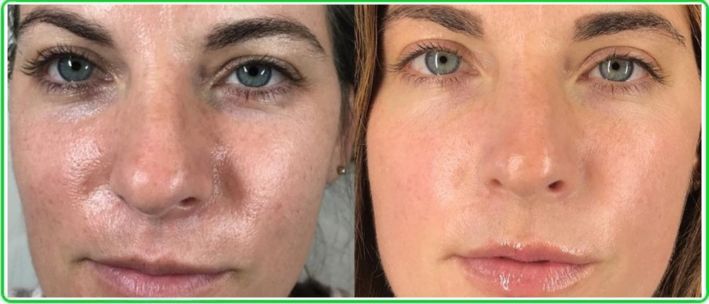CHRONIC RUNNY NOSE IN CHILDREN: ALLERGY OR INFECTION?

“Why don’t you just cure yourself with magic?” “Because there’s no spell for the common cold!” (Quote from “Howl’s Moving Castle” by Diana Wynne Jones)
Let’s talk about a child’s first encounters with the world around them — whether it’s building a figure out of blocks or checking what’s hiding in the dog’s cheek. Every child has their own curiosity, and every parent has their own worries. One of the most common concerns? A persistent runny nose. But how can you tell if it’s an allergy or just another cold? Here to answer is Dr. Maryna, PhD in Medical Sciences, Associate Professor, and practicing ENT (ear, nose, and throat) specialist.
Chronic nasal congestion in children is a frequent reason for visits to ENT specialists and allergists. Parents often wonder: Is this an infection or a sign of an allergy? The symptoms can look very similar — nasal blockage, sneezing, discharge, headaches — but the treatment is completely different. That’s why finding the cause is essential.
Allergy vs. Infection: What’s the Difference?
Some allergy symptoms — runny nose, sneezing, coughing, headache — can easily be mistaken for a common cold. However, infection almost always come with a fever, develop quickly, and resolve within about a week.
Typical signs of allergic rhinitis include:
- Red, watery eyes
- Itchy nose
- Skin rashes
- No fever
- Symptoms lasting for weeks or months, as long as exposure to the allergen continues
What Is an Allergy?
An allergy is an abnormal immune response to substances that are normally harmless, such as pollen, pet dander, certain foods, or dust. When an allergen enters the body, the immune system releases histamine, which triggers inflammation of the nasal mucosa and other symptoms.
Why are allergies more common now?
Researchers point to several factors behind the growing number of allergic conditions in children:
- Air pollution — industrial smog and vehicle exhaust irritate the nasal lining, weaken its natural defenses, and make it easier for allergens to penetrate.
- Genetic predisposition — increased production of Immunoglobulin E (IgE) and pro-inflammatory mediators.
- Hygiene hypothesis — reduced microbial diversity in the environment. In overly “sterile” conditions, the immune system doesn’t get enough training to tell friend from foe.
- Modern lifestyle — long hours indoors, less physical activity, and overuse of antibiotics.
How to Diagnose an Allergy?
Diagnosis is based on clinical symptoms and specialized tests, including:
- Blood test for total and specific IgE — shows sensitivity but doesn’t confirm an allergy without symptoms
- Skin prick testing — identifies specific allergens
- Provocation tests — performed under medical supervision
6 ways to deal with seasonal allergies
- Minimize exposure to allergens (for example, during pollen season, avoid being outdoors on dry, windy days)
- Keep windows closed and use air conditioning with quality filters
- Shower and wash hair after outdoor activities
- Drink plenty of water
- Avoid smoking and second-hand smoke
- Use antihistamines, nasal sprays, and eye drops as prescribed by a doctor
Can Allergies Be Cured?
There is no permanent cure for allergies yet, but symptoms can be managed effectively. One of the most promising treatments is allergen-specific immunotherapy (ASIT). Over several months or years, patients receive gradually increasing doses of the allergen to build tolerance.
Chronic Runny Nose: When to Suspect an Infection
If nasal symptoms last more than 10–14 days and are accompanied by:
- Thick discharge
- Facial pain or pressure over the sinuses
- Unpleasant odor from the nose
- Low-grade fever
- Night-time coughing
…it may be a sign of chronic rhinitis or sinusitis caused by bacterial, viral, or even fungal infection. In such cases, treatment targets the root cause, not just symptom relief.
Research Highlights
- According to the European Academy of Allergy and Clinical Immunology (EAACI), allergic rhinitis affects up to 40% of children and increases the risk of developing asthma.
- A 2022 meta-analysis found that early diagnosis of allergies and timely ASIT in children aged 6–12 reduced the risk of allergic rhinitis progressing to asthma by 34%.
- Studies show that using HEPA filters in the homes of allergic children reduces dust mite allergen levels by 60–75%, significantly improving symptoms.
- In chronic bacterial rhinitis, early targeted antibiotic therapy (based on microbiological testing) shortens illness duration by an average of 4–5 days.
Key Takeaways for Parents
- Don’t ignore a persistent runny nose — it could be allergy or infection.
- Avoid self-diagnosis — only a healthcare professional can determine the cause.
- Allergy management involves both medication and lifestyle changes.
- Infections require treating the underlying pathogen, not just masking symptoms.
Dr. Maryna’s Advice:
A chronic runny nose is not something your child has to “just live with.” Modern diagnostics can quickly identify the cause, and a personalized treatment plan can help you say goodbye to the constant congestion for good.












